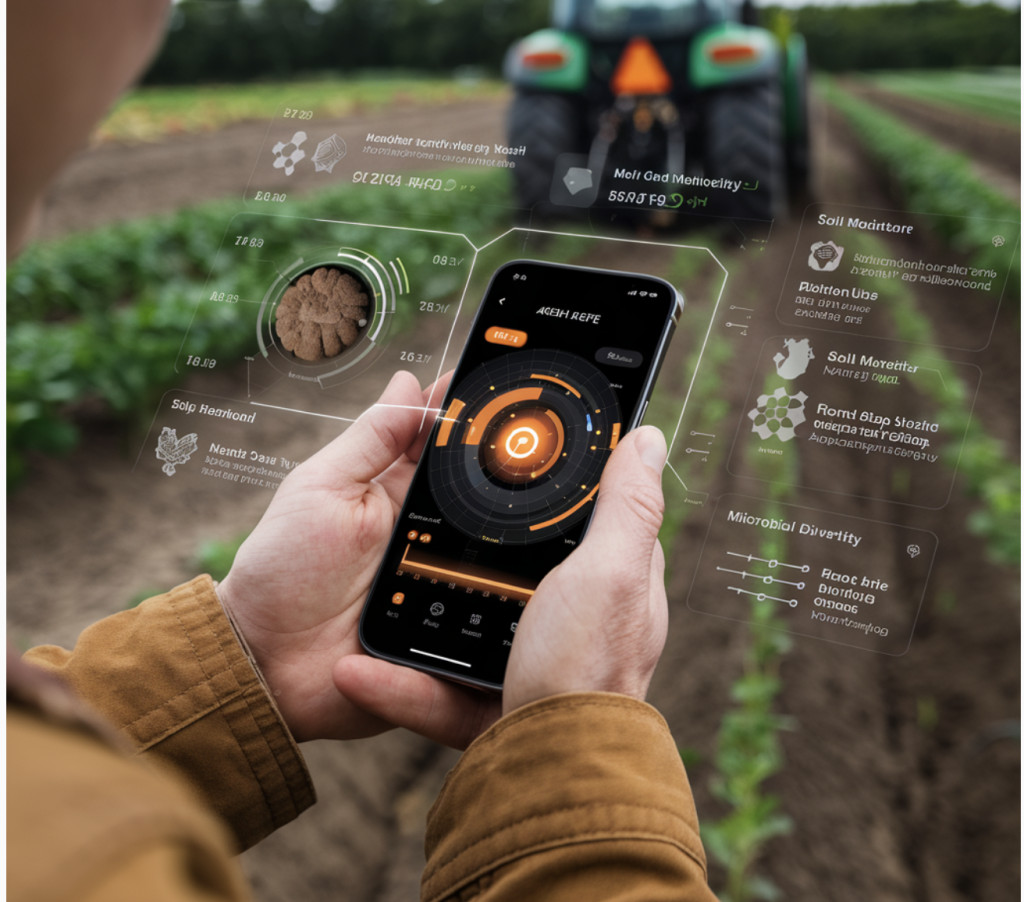Soil Health Monitoring through Microbiome-Based Machine Learning:
Soil health is critical for maintaining agroecosystems’ ecological and commercial value, requiring the assessment of biological, chemical, and physical soil properties. Traditional methods for monitoring these properties can be expensive and impractical for routine analysis. However, the soil microbiome offers a rich source of information that can be analyzed cost-effectively using high-throughput sequencing. This study explores the potential of ML models, specifically random forest (RF) and support vector machine (SVM), to predict 12 key soil health metrics, including tillage status and soil texture, using 16S rRNA gene amplicon data. The models demonstrated strong predictive capabilities, achieving a Kappa value of approximately 0.65 for categorical assessments and an R² value of about 0.8 for numerical predictions, particularly excelling in predicting biological health metrics over chemical and physical ones.
The study also delves into the challenges and best practices in processing microbiome data for ML applications. It was found that models trained at the highest taxonomic resolution were the most accurate and that common data processing techniques, such as rarefying and aggregating taxa, could reduce prediction accuracy. Key microbial taxa, such as Pyrinomonadaceae and Nitrososphaeraceae, were identified as important contributors to model accuracy, correlating with known soil health indicators. Microbiome-based diagnostics could provide a scalable, effective tool for soil health monitoring, offering a practical solution for regularly assessing soil properties and adopting sustainable agricultural practices.
Methods:
A comprehensive soil health assessment was conducted using 949 soil samples from various farmlands across the USA and Canada, following the Comprehensive Assessment of Soil Health (CASH) protocol guidelines. To maintain the integrity of the microbiome composition, samples were homogenized, air-dried, and analyzed within two months at the Cornell Soil Health Laboratory. Each sample underwent a thorough analysis covering 12 key biological, chemical, and physical soil health metrics, which were subsequently normalized and categorized into health ratings for practical management use. Total DNA was extracted using the DNeasy PowerSoil kit, followed by quantification. The bacterial communities were profiled by sequencing the V4 region of the 16S rRNA gene. The sequencing data were processed with QIIME2, utilizing DADA2 for amplicon sequence variant (ASV) assignment, and taxonomy was assigned using the Silva database. Methods such as rarefying, proportioning, CSS normalization, and sparsity filtering were employed to create five distinct dataset types to prepare the data for further analysis.
Supervised machine learning models, specifically RF and L2-regularized support vector machines (SVM), were developed to predict soil health metrics, tillage practices, and soil texture based on the microbiome data. The modeling workflow involved scaling features, performing an 80:20 train-test split repeated multiple times to ensure robustness, and selecting optimal hyperparameters through cross-validation. Model performance was evaluated using kappa statistics for classification tasks and R² values for regression. Feature importance was determined using a leave-one-out approach to identify key taxa contributing to predictive accuracy. The best-performing models were validated against independent datasets from the Musgrave Farm and Pastureland studies, demonstrating their generalizability.Â
Summary of Soil Microbiome-Based ML Model Evaluation:
A continent-wide survey of North American farmland soil evaluated the predictive accuracy of ML models using soil microbiome data. SVM excelled in classifying soil health, while RF performed better in regression tasks. Read-depth normalization and taxonomic resolution significantly influenced model accuracy. The most predictive features were specific ASVs linked to health metrics like active carbon. Cross-validation with independent datasets confirmed the models’ robustness, especially for predicting biological metrics. Soil microbiomes showed significant geographical variation, with chemical properties driving most differences in community composition.
Potential and Challenges of Microbiome-Based ML Models for Soil Health Prediction:
This study highlights the potential of using microbiome-based ML models to predict soil health metrics. The 16S rRNA gene survey of soil microbiomes revealed that while these models could effectively predict biological health metrics, their accuracy regarding chemical and physical metrics was lower. The models faced challenges due to the narrow range of soil pH values and the dataset’s underrepresentation of extreme soil health conditions. Improving the accuracy of these models will require better representation of diverse soil health statuses, particularly at the extremes, and overcoming the difficulties in processing soils with low health ratings, which tend to be more phylogenetically diverse.
Despite these challenges, the study concludes that microbiome-ML models show promise in supplementing or potentially replacing traditional soil health assessments, especially in biological metrics. The findings suggest that as more data becomes available, particularly region-specific or management-specific data, the accuracy of these models will improve. The study also underscores the need to develop high-throughput methods to collect microbiome data, particularly for soils with low DNA yields. While L2-linear SVM models outperformed RF in classification tasks, RF models excelled in regression tasks, indicating no clear preference for a specific ML algorithm in soil health prediction. Future research and adoption of microbiome-ML approaches in soil health frameworks could enhance digital agriculture and provide a comprehensive measure of soil health.
Check out the Paper. All credit for this research goes to the researchers of this project. Also, don’t forget to follow us on Twitter and join our Telegram Channel and LinkedIn Group. If you like our work, you will love our newsletter..
Don’t Forget to join our 50k+ ML SubReddit
Here is a highly recommended webinar from our sponsor: ‘Building Performant AI Applications with NVIDIA NIMs and Haystack’
The post Advancing Soil Health Monitoring: Leveraging Microbiome-Based Machine Learning for Enhanced Agricultural Sustainability appeared first on MarkTechPost.
Source: Read MoreÂ
